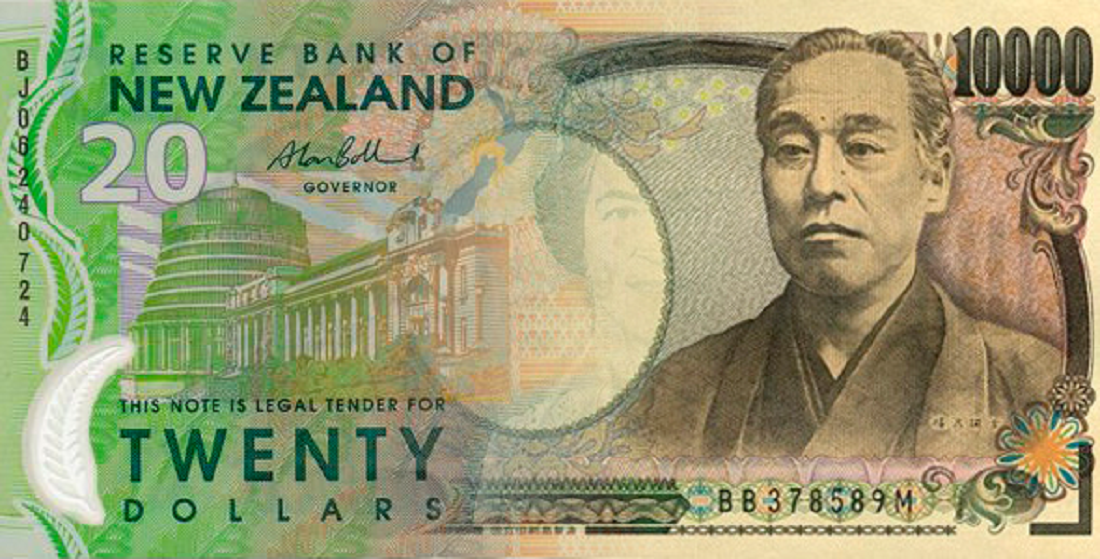Following yesterday’s global sell-off which drove traders to safe-haven assets such as gold and bonds, forex traders are now shifting through the aftermath. A light economic calendar will ease the pressure, but US President Trump’s escalation of the trade war with China will continue to dominate. New Zealand reported a better-than-expected employment report for the second-quarter, despite the ongoing glowing slowdown which gave a boost to the New Zealand Dollar as the RBNZ lowered its inflation expectations. The NZDJPY bounced off of strong support levels, but can the recovery last? This morning’s fundamental analysis will explore the options for price action moving forward.
Here are the key factors to keep in mind today for New Zealand Dollar trades:
- New Zealand Employment Data: The Unemployment Rate for the second-quarter was reported at 3.9%. Economists predicted an Unemployment Rate of 4.3%. Forex traders can compare this to the Unemployment Rate for the first-quarter which was reported at 4.2%. The Unemployment Change for the second-quarter increased by 0.8% quarterly and by 1.7% annualized. Economists predicted an increase of 0.3% quarterly and of 1.2% annualized. Forex traders can compare this to the Unemployment Change for the first-quarter which decreased by 0.1% quarterly and which increased by 1.5% annualized. The Participation Rate for the second-quarter was reported at 70.4%. Economists predicted a Participation Rate of 70.4% quarterly. Forex traders can compare this to the Participation Rate for the first-quarter which was reported at 70.4%. Private Wages ex Overtime for the second-quarter increased by 0.8% quarterly. Economists predicted an increase of 0.7% quarterly. Forex traders can compare this to Private Wages ex Overtime for the first-quarter which increased by 0.3% quarterly. Labor Cost Private Sector for the second-quarter increased by 0.8% quarterly. Economists predicted an increase of 0.7% quarterly. Forex traders can compare this to Labor Cost Private Sector for the first-quarter which increased by 0.3% quarterly. Average Hourly Earnings for the second-quarter increased by 1.1% quarterly. Economists predicted an increase of 0.5% quarterly. Forex traders can compare this to Labor Cost Private Sector for the first-quarter which increased by 1.1% quarterly.
- Reserve Bank of New Zealand 2-Year Inflation Expectations: Reserve Bank of New Zealand 2-Year Inflation Expectations for the third-quarter increased by 1.86%. Forex traders can compare this to Reserve Bank of New Zealand 2-Year Inflation Expectations for the second-quarter which increased by 2.01%.
The Japanese Yen was in demand yesterday as forex traders fled to safe haven assets. The Bank of Japan cautioned markets against excessive strength in the Japanese currency and warned of intervention. Economic data released out of Japan showed better-than-expected household spending data as labor cash earnings improve. The Japanese Leading Index contracted further and a sales tax is looming over the Japanese consumer as the global economy is cooling. Is now the time to short the Japanese Yen for a short-term reversal? Follow the PaxForex Daily Fundamental Analysis and get your NZDJPY trading set-up today!
Here are the key factors to keep in mind today for Japanese Yen trades:
- Japanese Household Spending: Japanese Household Spending for June increased by 2.7% annualized. Economists predicted an increase of 1.1% annualized. Forex traders can compare this to Japanese Household Spending for May which increased by 4.0% annualized.
- Japanese Labor Cash Earnings and Japanese Real Cash Earnings: Japanese Labor Cash Earnings for June increased by 0.4% annualized and Japanese Real Cash Earnings decreased by 0.5% annualized. Economists predicted a decrease of 0.6% and of 1.5%. Forex traders can compare this to Japanese Labor Cash Earnings for May which decreased by 0.5% annualized and to Japanese Real Cash Earnings which decreased by 1.3% annualized.
- Japanese Leading Index and Japanese Coincident Index: The Preliminary Japanese Leading Index for June was reported at 93.3 and the Preliminary Japanese Coincident Index was reported at 100.4. Economists predicted a figure of 93.5 and of 100.4. Forex traders can compare this to the Japanese Leading Index for May which was reported at 94.9 and to the Japanese Coincident Index which was reported at 103.4.
Should price action for the NZDJPY remain inside the or breakout above the 69.150 to 70.000 zone the following trade set-up is recommended:
- Timeframe: D1
- Recommendation: Long Position
- Entry Level: Long Position @ 69.600
- Take Profit Zone: 72.200 – 73.200
- Stop Loss Level: 69.000
Should price action for the NZDJPY breakdown below 69.150 the following trade set-up is recommended:
- Timeframe: D1
- Recommendation: Short Position
- Entry Level: Short Position @ 68.750
- Take Profit Zone: 66.150 – 66.950
- Stop Loss Level: 69.150
Open your PaxForex Trading Account now and add this currency pair to your forex portfolio. Forex trading for beginners can be an overwhelming task, find out now how PaxForex helps every trader to get the most from the forex market and why more traders every day prefer to trade at PaxForex!

